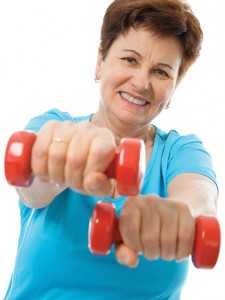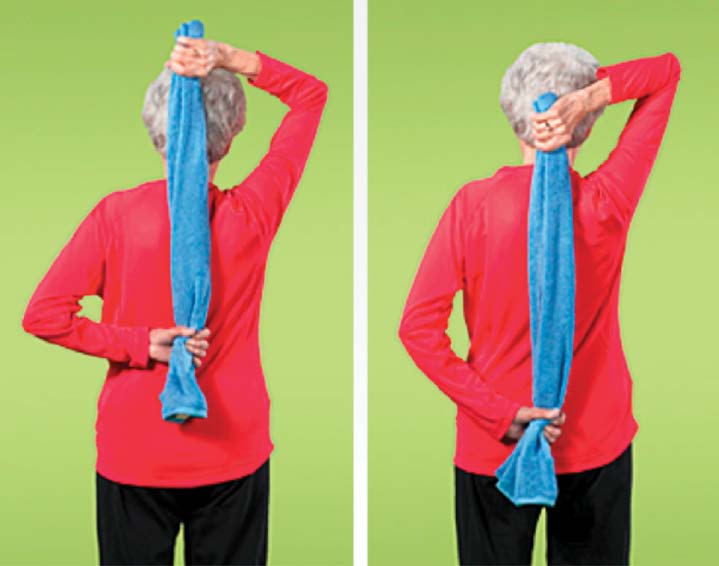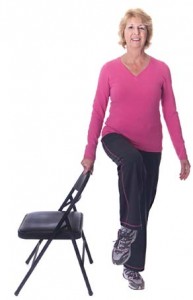March 28, 2013
Take Care of Your Core
Your abdominal, chest, and back muscles are the “core” of your body’s physical health.
By Selby Bateman
For most caregivers, a typical day can include plenty of physical activities—lifting, stretching, carrying, walking, climbing steps, driving … you name it. To handle all that without injury or exhaustion, health experts recommend that caregivers pay special attention to their “core strength.” The muscles associated with your abdominals, chest, and upper and lower back make up the core that helps you carry out the many physical activities associated with caregiving.

There are many abdominal and back exercises that can help you strengthen your core. Plus, yoga and Pilates classes are great ways to work on these core muscles. But core exercises don’t require expensive equipment or a gym. Many of them can be done right in your own home.
In fact, a new national exercise campaign from the National Institute on Aging (NIA), called Go4Life, offers a variety of simple and safe exercises that can improve the four basic categories of all exercise and physical activity—endurance, strength, balance, and flexibility. Aimed at men and women 50 years and older, Go4Life can be used by caregivers of any age to improve their core health.
The campaign grew out of concern that many older adults are not physically active. About 30 percent of Americans 45 to 64 say they engage in regular physical activity, while only a quarter of those 65 to 74 do. And although people 85 and older can benefit from exercise, only 11 percent report being active. For caregivers working with loved ones with Alzheimer’s disease, being physically active is vital for maintaining health and independence as they age.
“You’re never too old to increase your level of physical activity and exercise,” says NIA Director Richard J. Hodes, M.D. “Go4Life is based on research demonstrating real health benefits of exercise and physical activity. It shows how to exercise safely.”
Most people tend to focus on one activity or type of exercise—endurance, strength, balance, or flexibility and think they’re doing enough. Each type is different, though. Doing them all will give you more benefits. Mixing it up also helps to reduce boredom and cut any risk of injury. Some activities fit into more than one category. For example, many endurance activities also build strength. Strength exercises also help improve balance. The goal is to use all four types to help build your core strengths for everything you do.
Here are four easy-to-do exercises, one for each type of activity. For more examples, visit Go4Life at www.nia.nih.gov/Go4Life. It is always a good idea to discuss any exercise program with your healthcare provider first.
Strength Exercise
Strength exercises build muscle, and even very small changes in muscle strength can make a real difference in your ability to perform everyday activities like carrying groceries, lifting a grandchild, or getting up from a chair.
Exercise Instructions:
Targeted Muscles: Shoulders
What You Need: Hand-held weights
Stand with your feet shoulder-width apart.
1. Hold weights straight down at your sides, with palms facing backward.
2. Keeping them straight, breathe out as you raise both arms in front of you to shoulder height.
3. Hold the position for 1 second.
4. Breathe in as you slowly lower arms.
5. Repeat 10-15 times.
6. Rest; then repeat 10-15 more times.
Balance Exercise
Balance exercises help prevent falls. Many lower-body strength exercises also will improve your balance. You can’t balance without good core strength, endurance, and control. Balance becomes especially important as you get older.
What You Need: Sturdy chair
You can do this exercise while waiting for the bus or standing in line at the grocery. For an added challenge, you can modify the exercise to improve your balance.
1. Stand on one foot behind a sturdy chair, holding on for balance.
2. Hold position for up to 10 seconds.
3. Repeat 10-15 times.
4. Repeat 10-15 times with other leg.
5. Repeat 10-15 more times with each leg.
Endurance Exercise
Endurance exercises are activities that increase your breathing and heart rate for an extended period of time. Examples are walking, jogging, swimming, raking, sweeping, dancing, and playing tennis. Build up your endurance gradually, starting with as little as 5 minutes of endurance activities at a time, if you need to. Then try to build up to at least 30 minutes of moderate-intensity endurance activity on most or all days of the week.
Flexibility Exercise
Flexibility exercises stretch your muscles and can help your body stay limber. Being flexible gives you more freedom of movement for other exercises, as well as for your everyday activities.

Exercise Instructions:
Targeted Muscles: Shoulders and upper arms
What You Need: Towel
1. Stand with feet shoulder-width apart.
2. Hold one end of a towel in your right hand.
3. Raise and bend your right arm to drape the towel down your back. Keep your right arm in this position and continue holding on to the towel.
4. Reach behind your lower back and grasp the towel with your left hand.
5. To stretch your right shoulder, pull the towel down with your left hand. Stop when you feel a stretch or slight discomfort in your right shoulder.
6. Repeat at least 3-5 times.
7. Reverse positions, and repeat at least 3-5 times.












